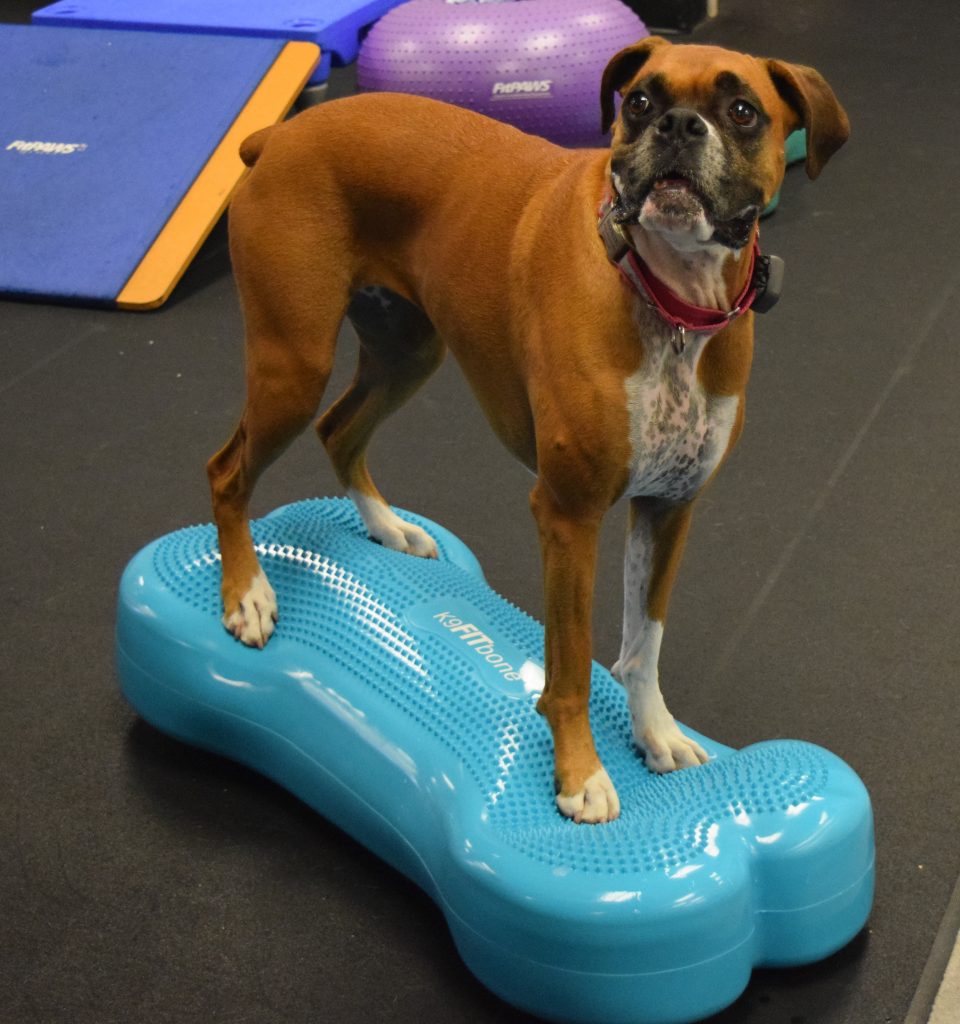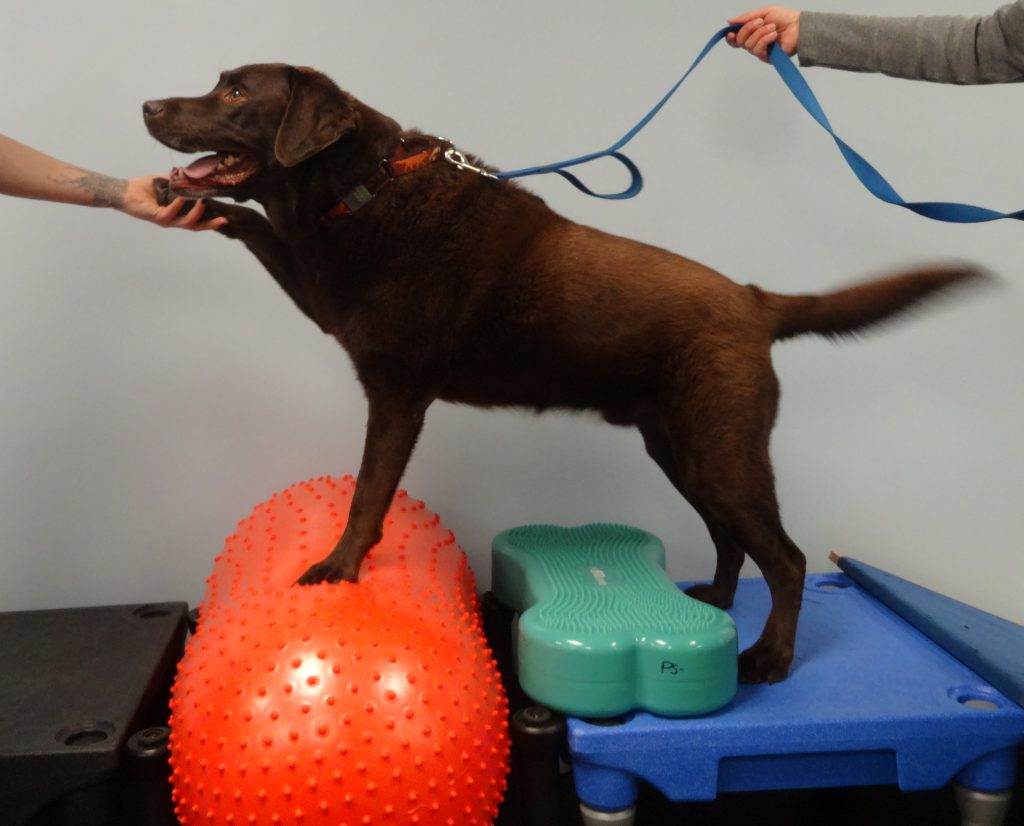Signs of Fatigue
By Cathryn Adolph, LVT, CCRP, CCFT

How do you know your dog is ready to stop exercising?
When performing and prescribing exercises for our patients, we are consistently evaluating a patient’s physical ability to do the exercise and for signs of fatigue. Some dogs give us very obvious signs that they cannot do what is asked of them or get tired, while some patients may be more subtle about the limits of their abilities. So let’s take a look the physical and mental signs of fatigue in our patients.
Physical Signs of Fatigue
Signs of fatigue in this category are visible changes in the dog’s performance and indicate muscle fatigue or discomfort. Examples include:
- Shifting positions
- Starting in a square position then tipping off onto a hip
- Trembling
- Changes in panting/breathing
- Weight shifting
- Leaning off to the side
- Limping and/or offloading weight from a limb
- Stretching limbs unevenly
- Unusual gaits
- This can be a dog that prefers to always trot instead of walk
- Pace gait is transitional, but a dog may not transition out of it
Behavioral Signs of Fatigue
Behavioral signs are a bit more subtle and can indicate either mental fatigue or that what we are asking is too hard for the patient. Often in rehabilitation, I have to progress exercises by teaching new behaviors or introducing new pieces of equipment and this can be mentally exhausting for the patient! The pet may also just simply not know how to move their body into the proper position when using new epuipment. Behavior signs of fatigue include:

- Performing a behavior when asked, and suddenly stop responding
- Wandering off despite being rewarded
- Offering a different behavior than what was asked
- Loss of focus
- Pet starts paying attention more to environment than the work with no new distractions
- Become grabby for treats
- Sniffing, scratching, licking, and other avoidance behaviors
As mentioned earlier, these can be both physical fatigue and/or the pet is simply mentally tired from learning. We describe this is a separate section, as these signs can be more frustrating when seen at home. Your pet is not being stubborn or disobedient, they may simply need a break.
Why does this matter?
Why does it matter if a patient is fatigued? These signs are our patient’s way of telling us they are getting tired or uncomfortable. For our older or rehabilitation patients, pushing them past fatigue can make them sore and slow down progress as they recover. For younger or fitness patients, we may ask them to go to signs of fatigue then stop.
Have you seen any of these?
Knowing when to stop exercises can mean the difference between needing a nap in the afternoon or being sore for several days. Now that you know what to look for, have you ever seen these signs of fatigue in your pets?
Interested in learning more about over-exercising? Check out our previous blog, No Pain No Gain.

